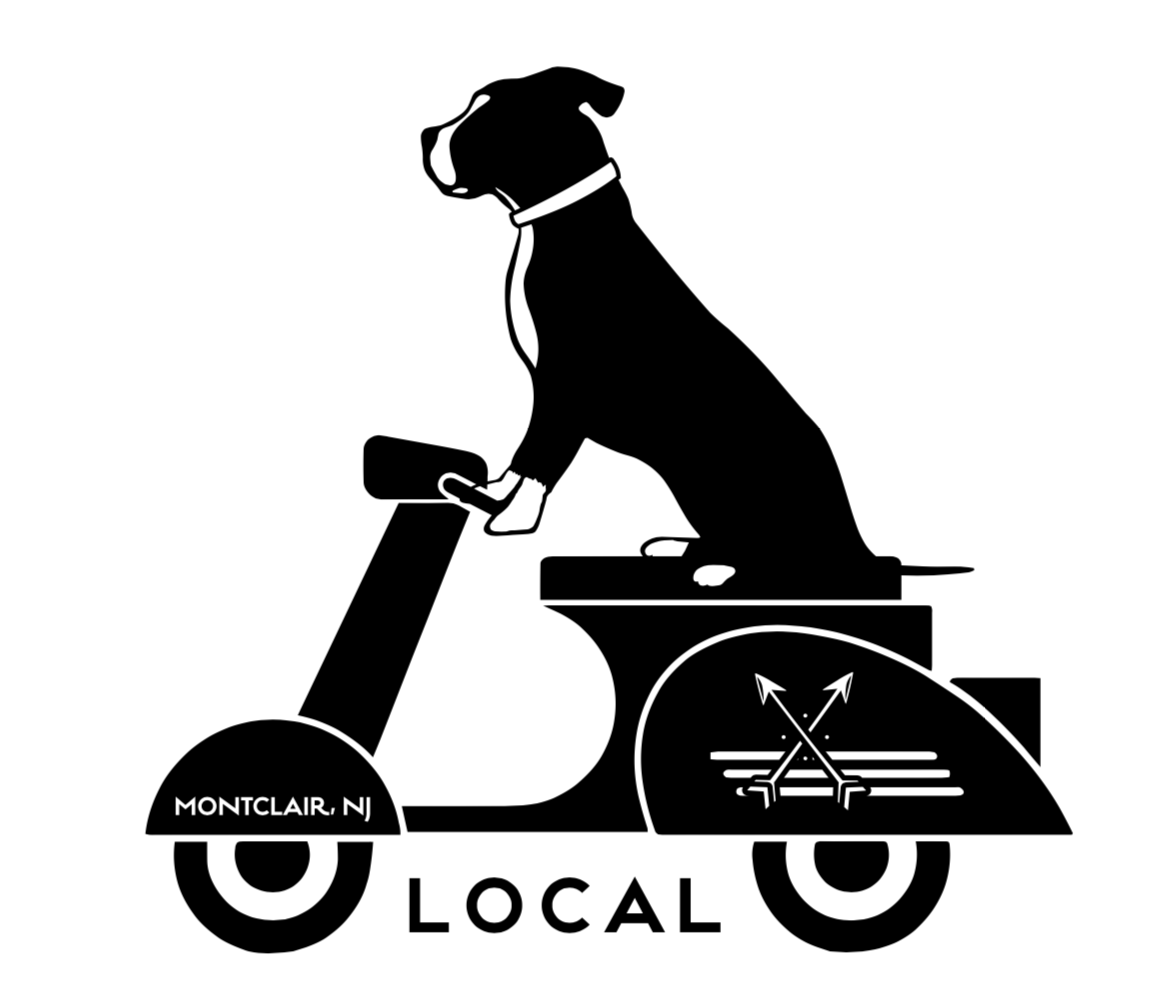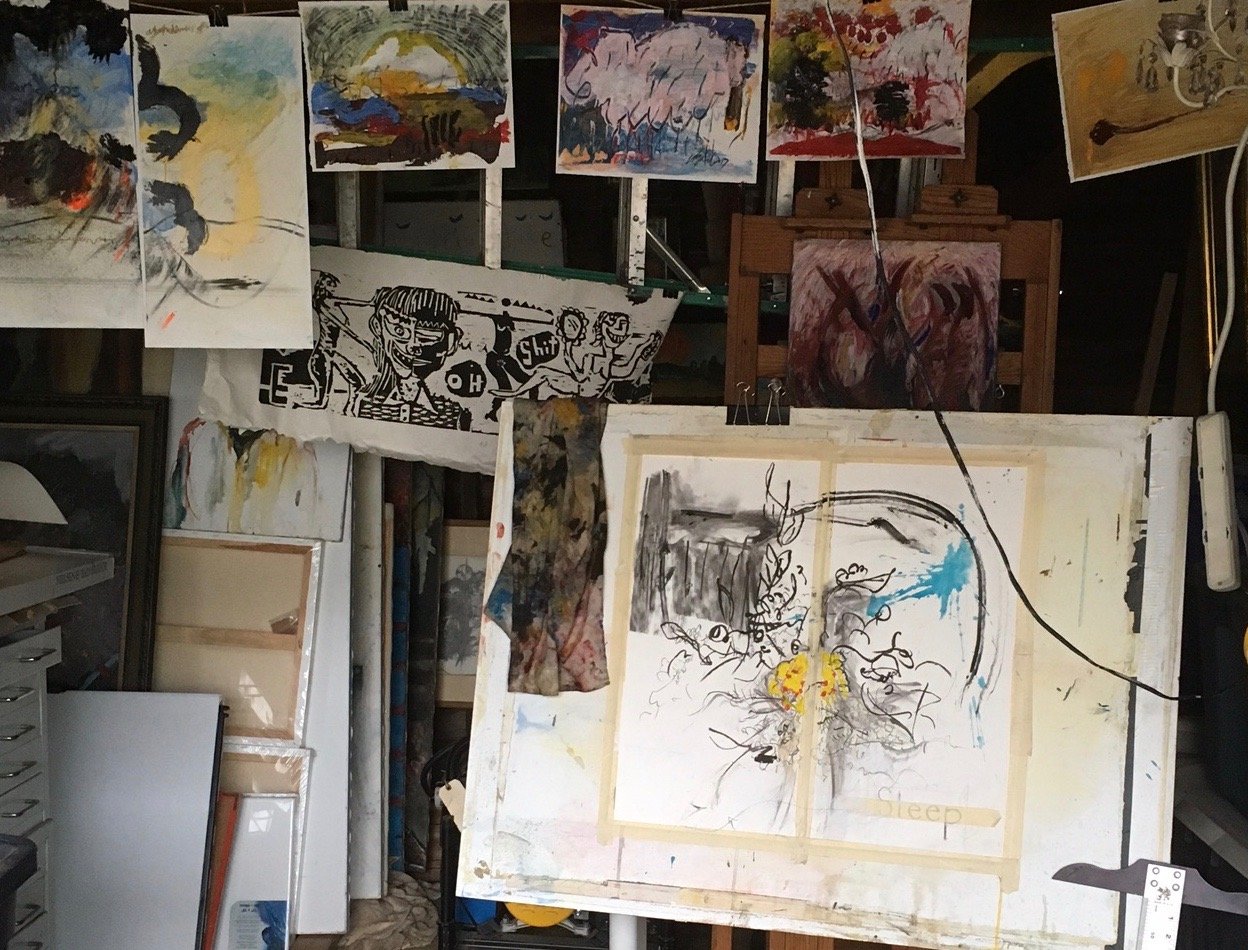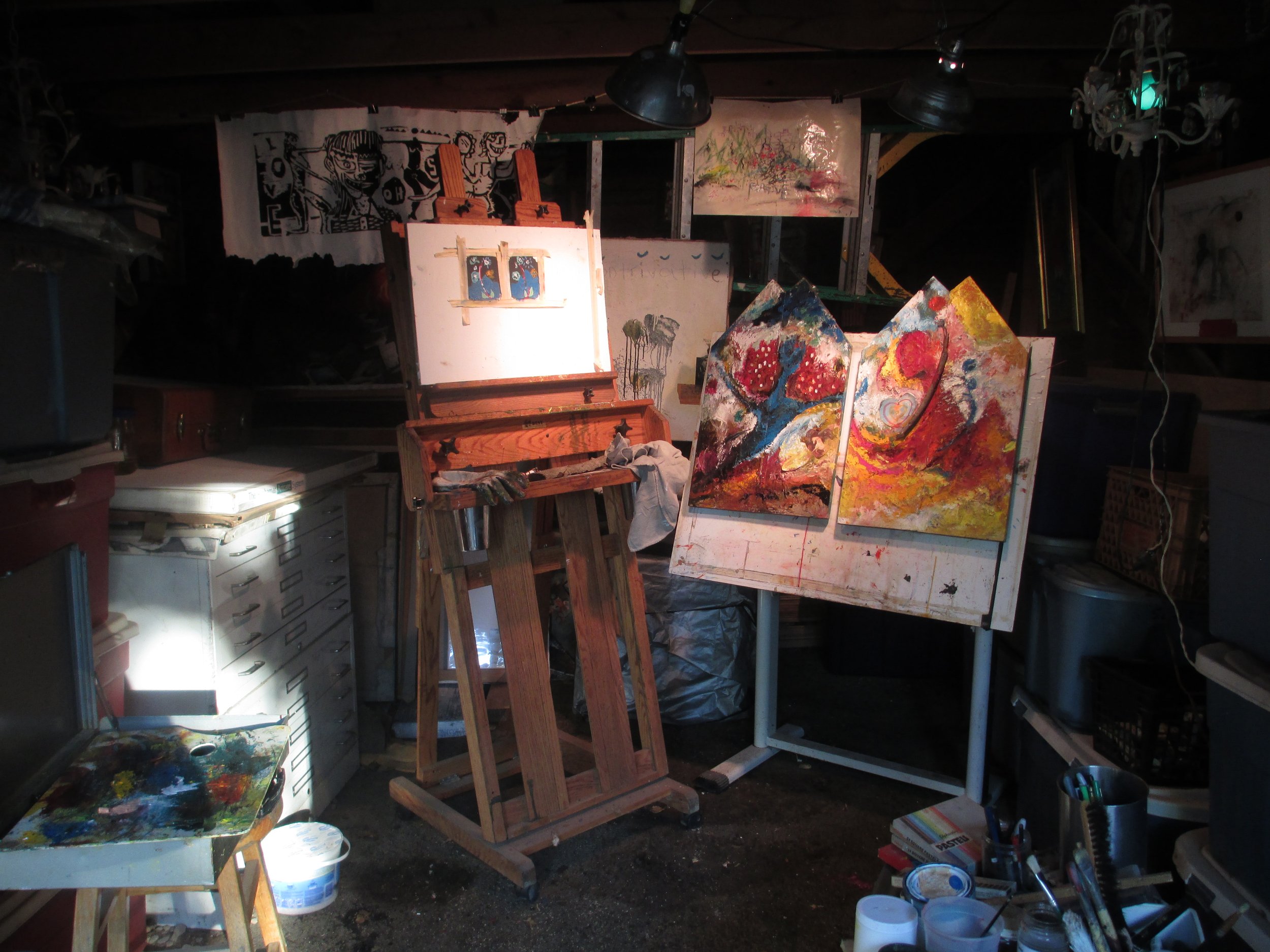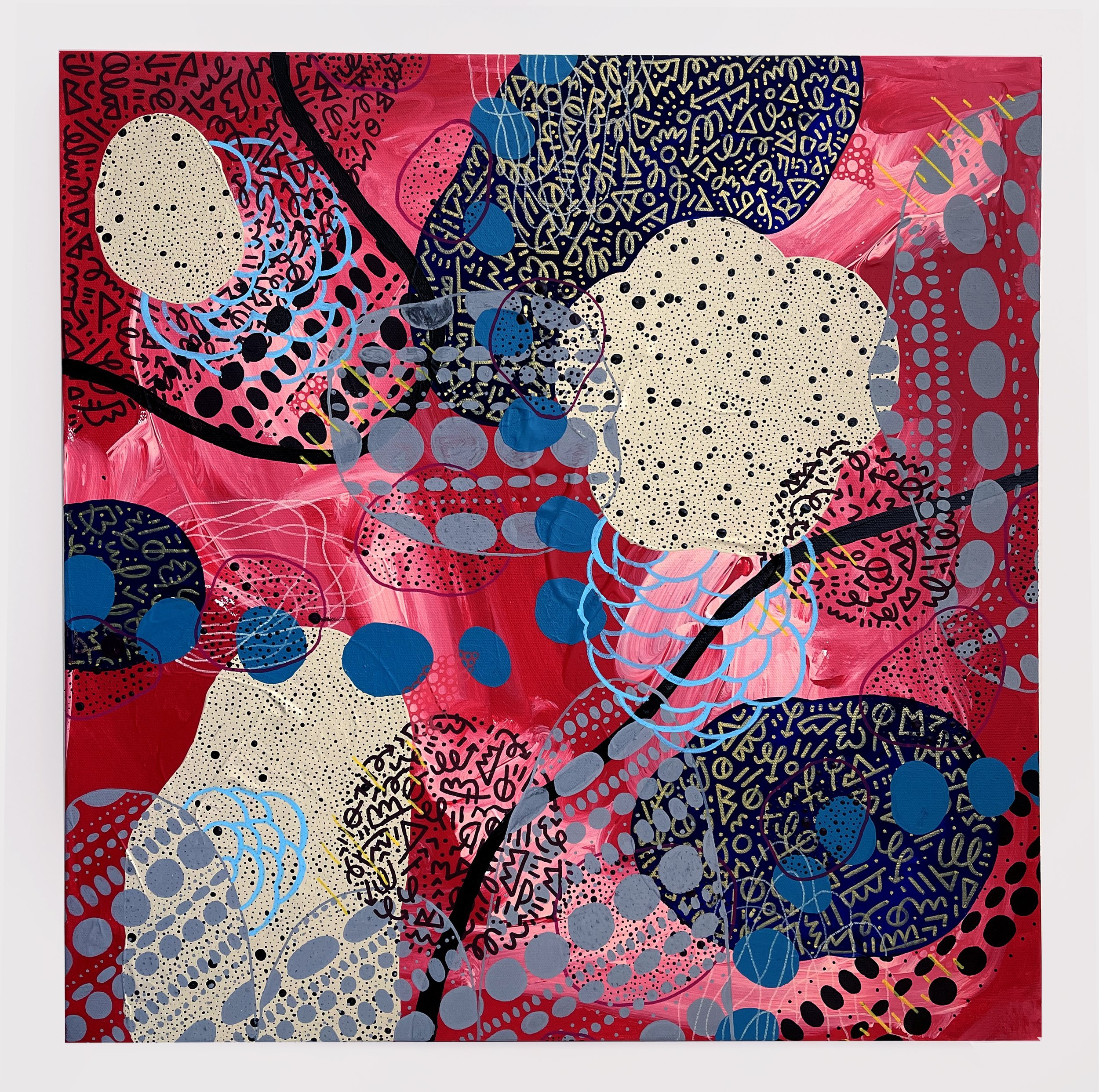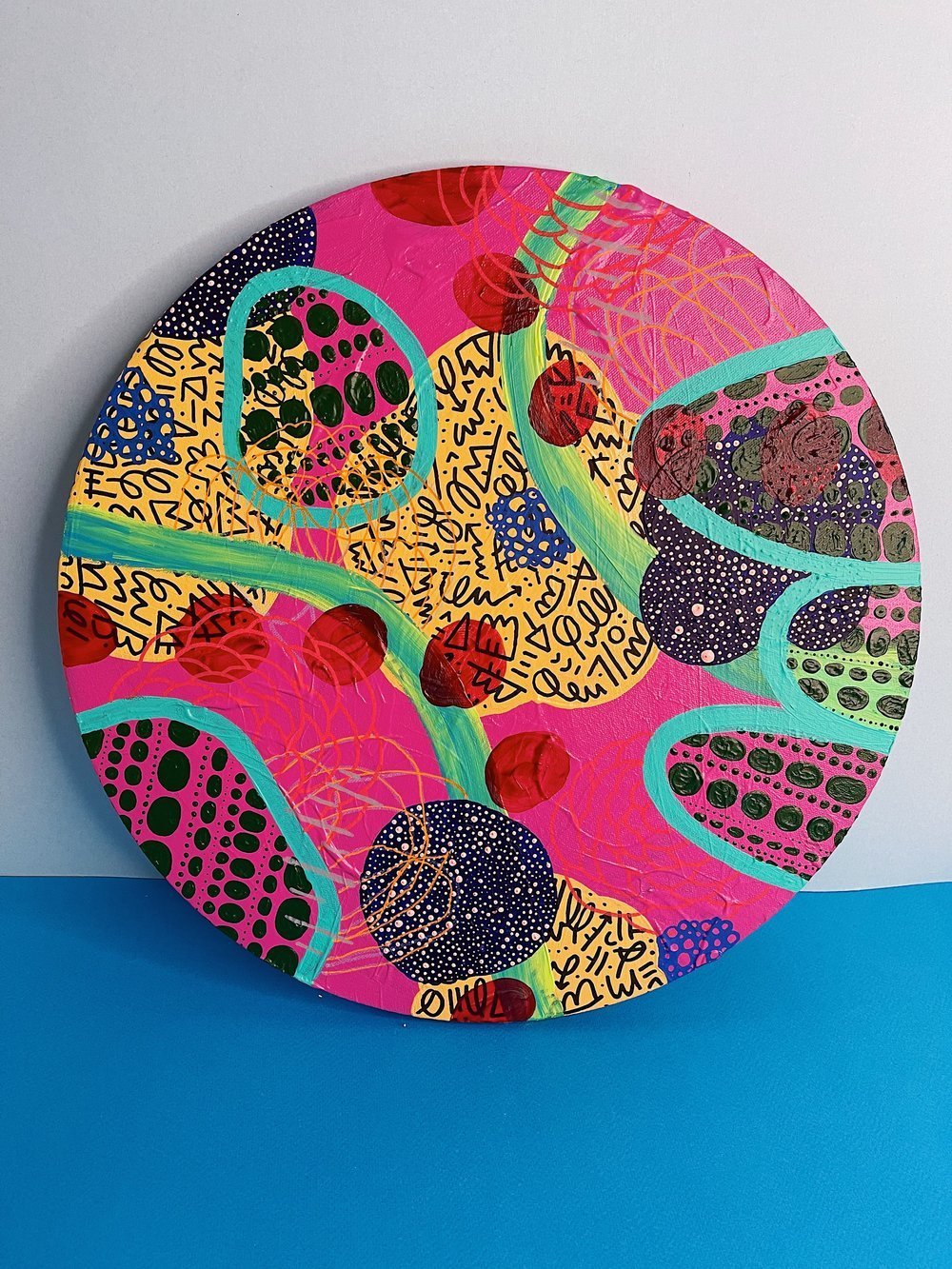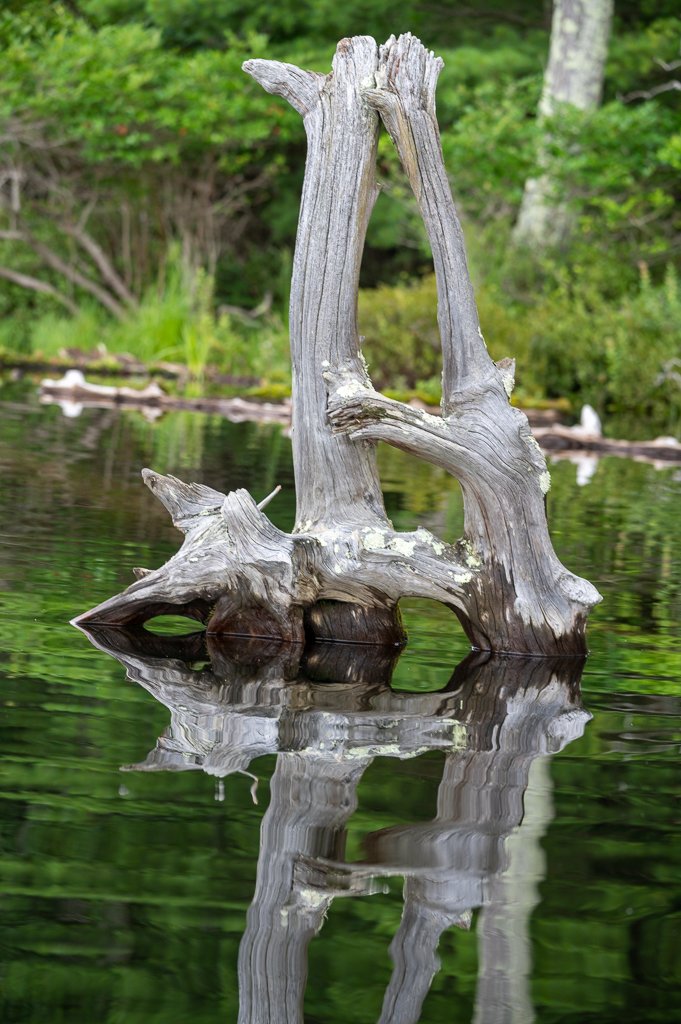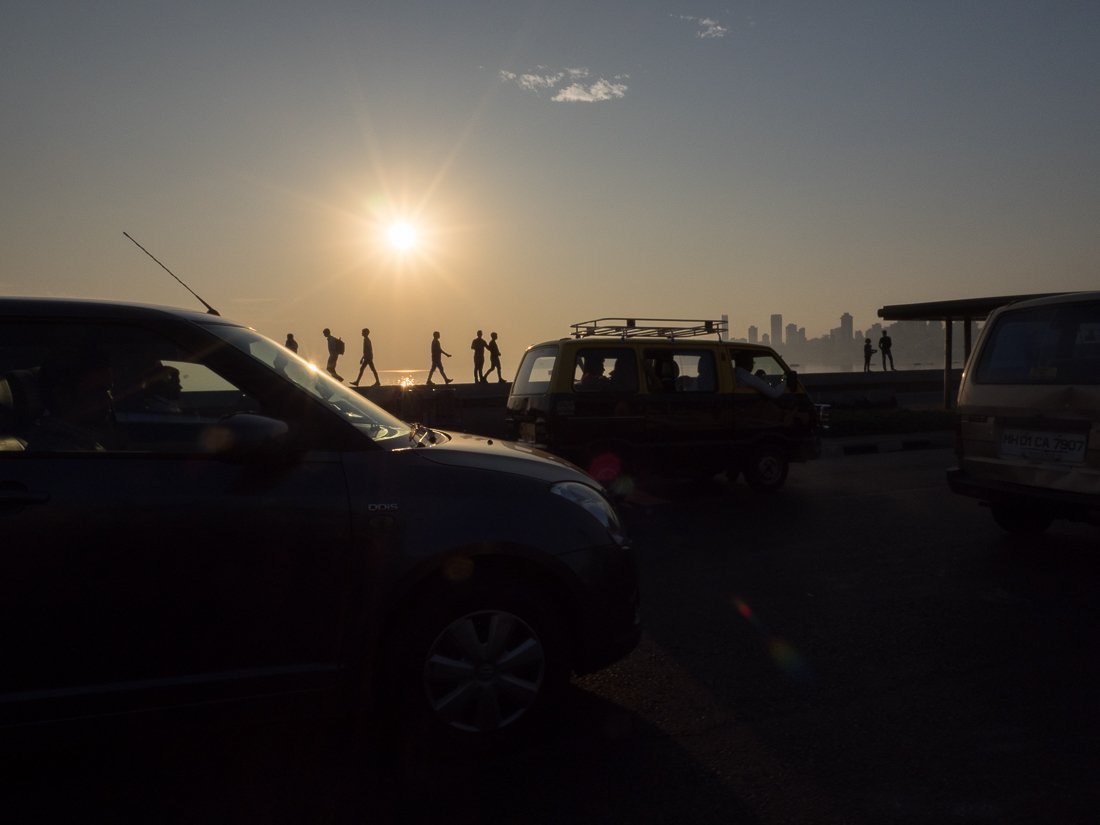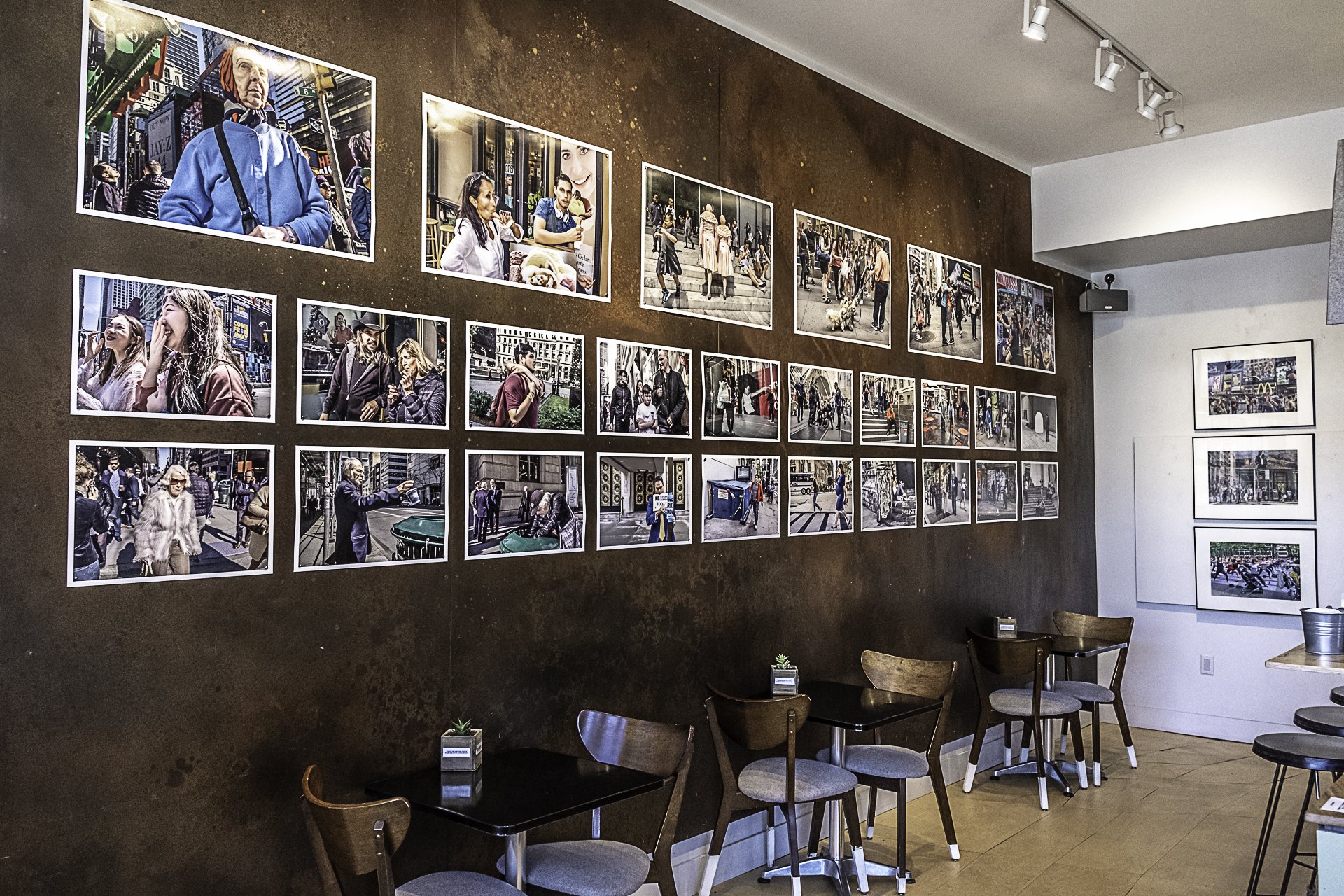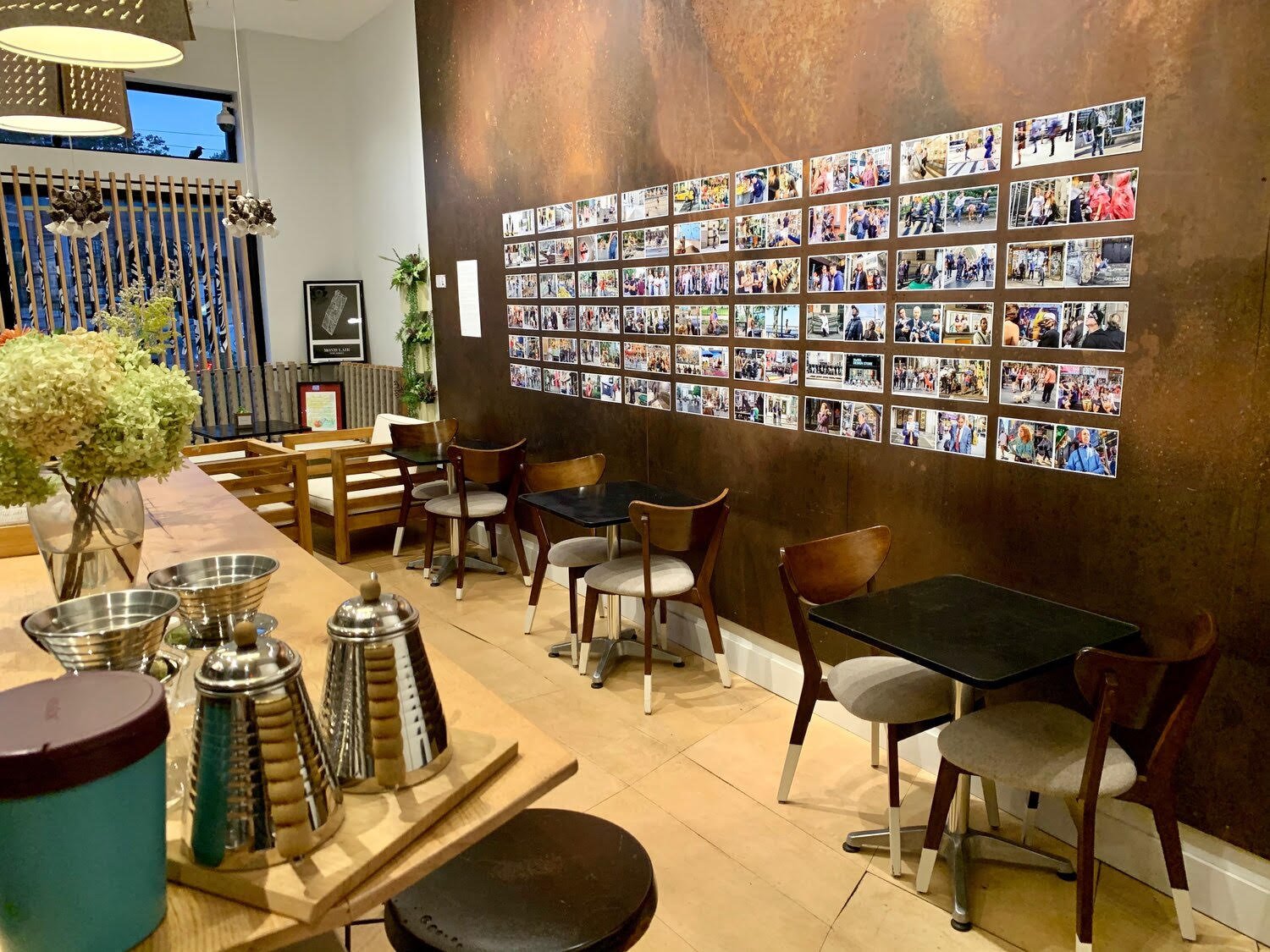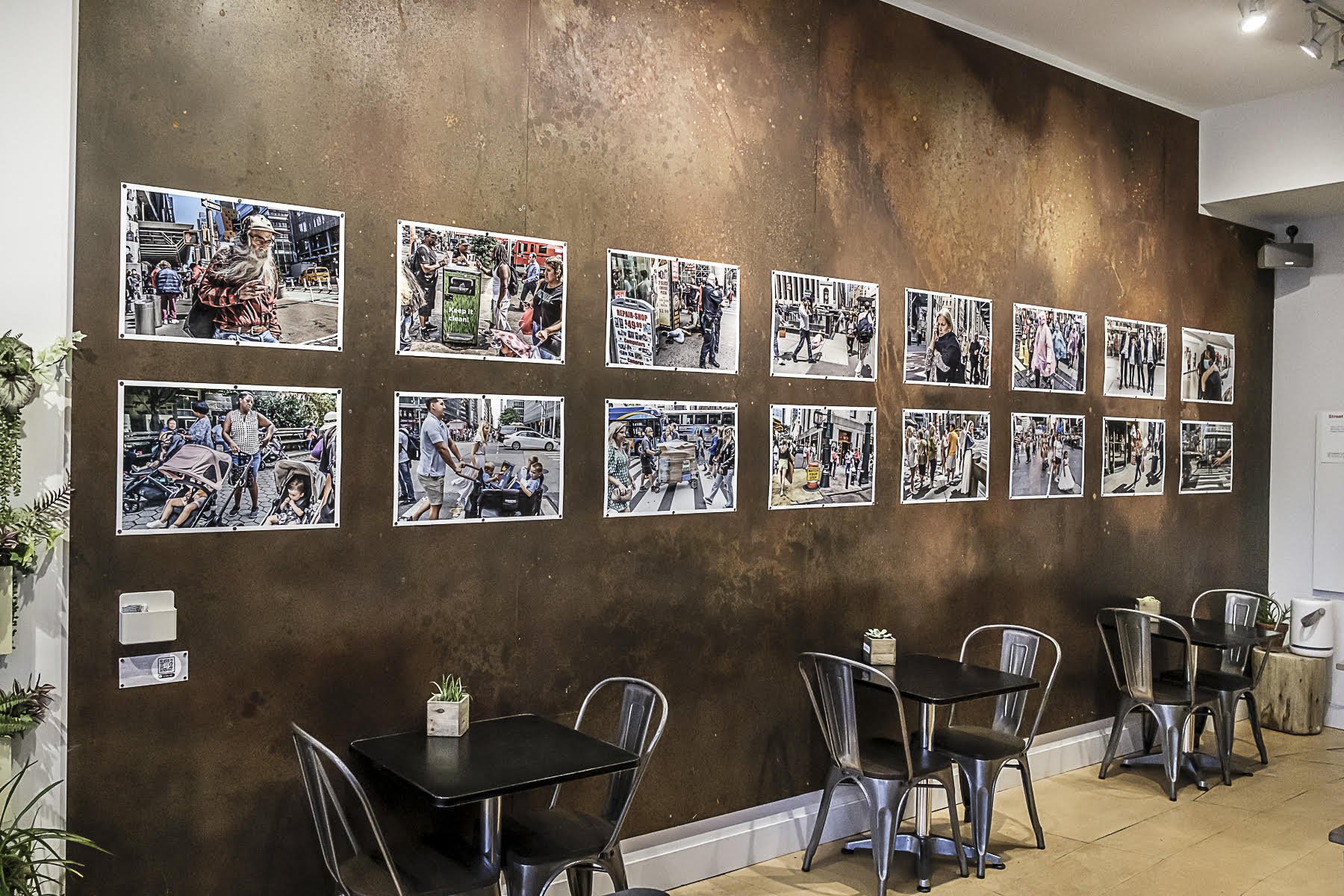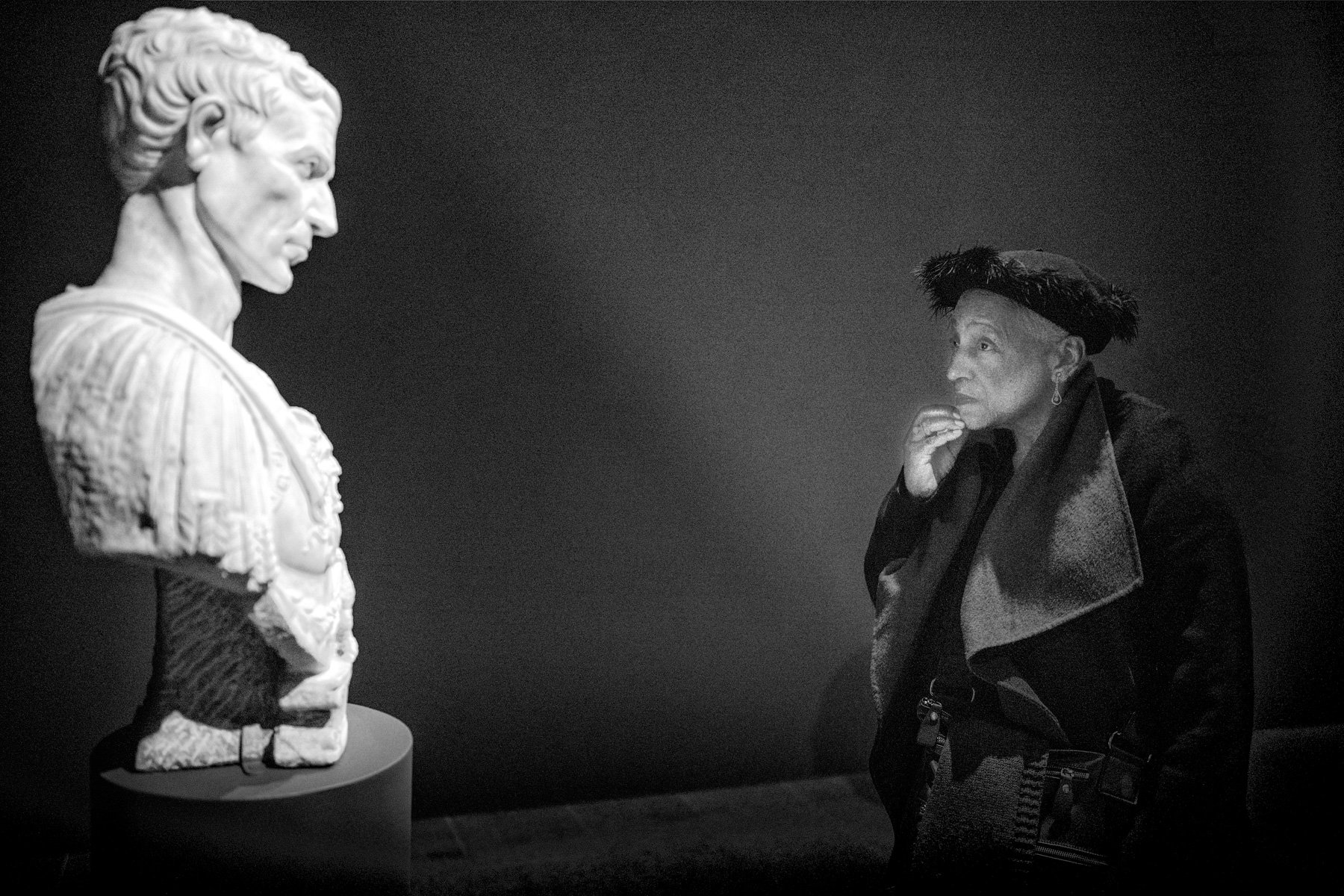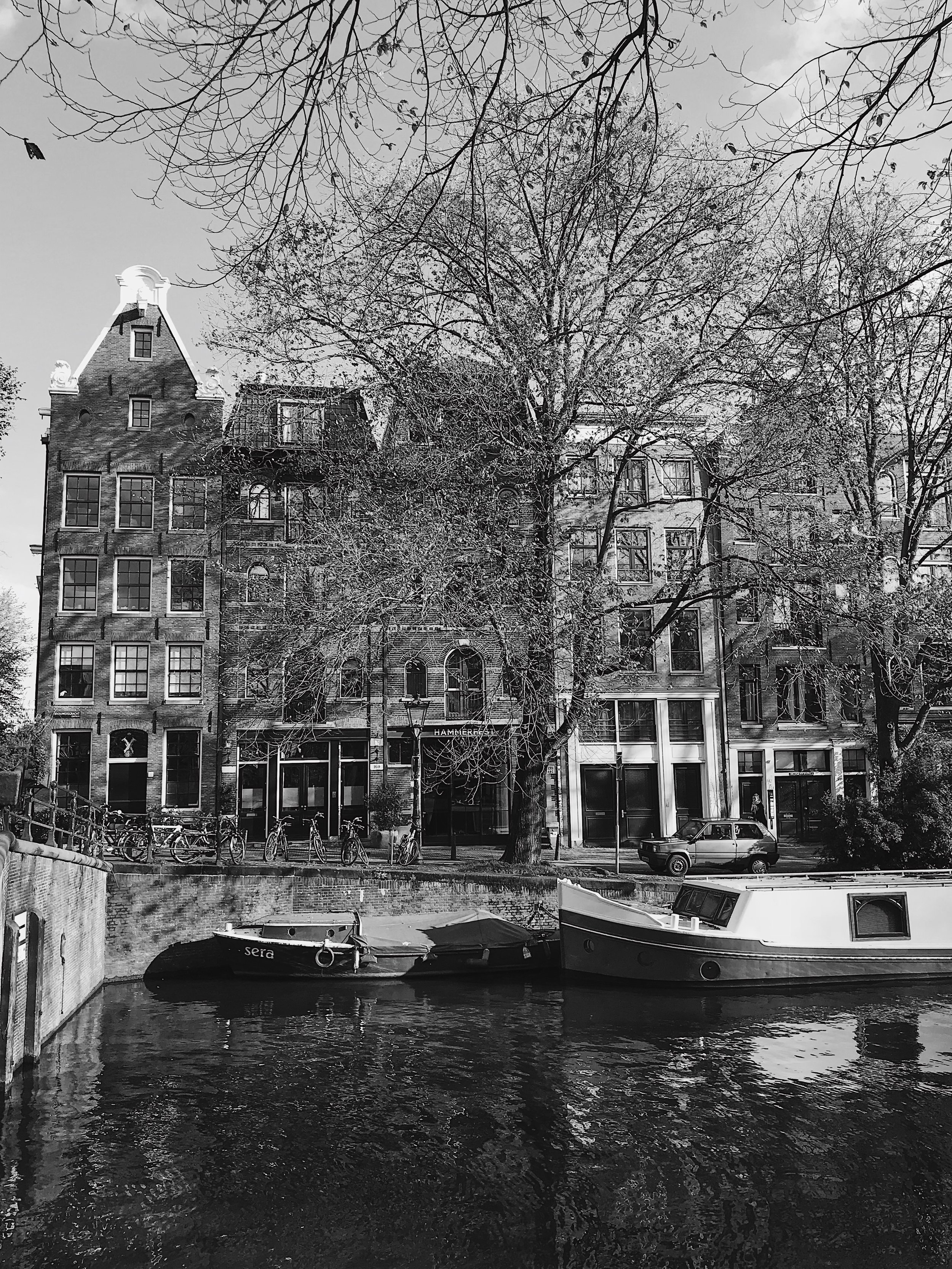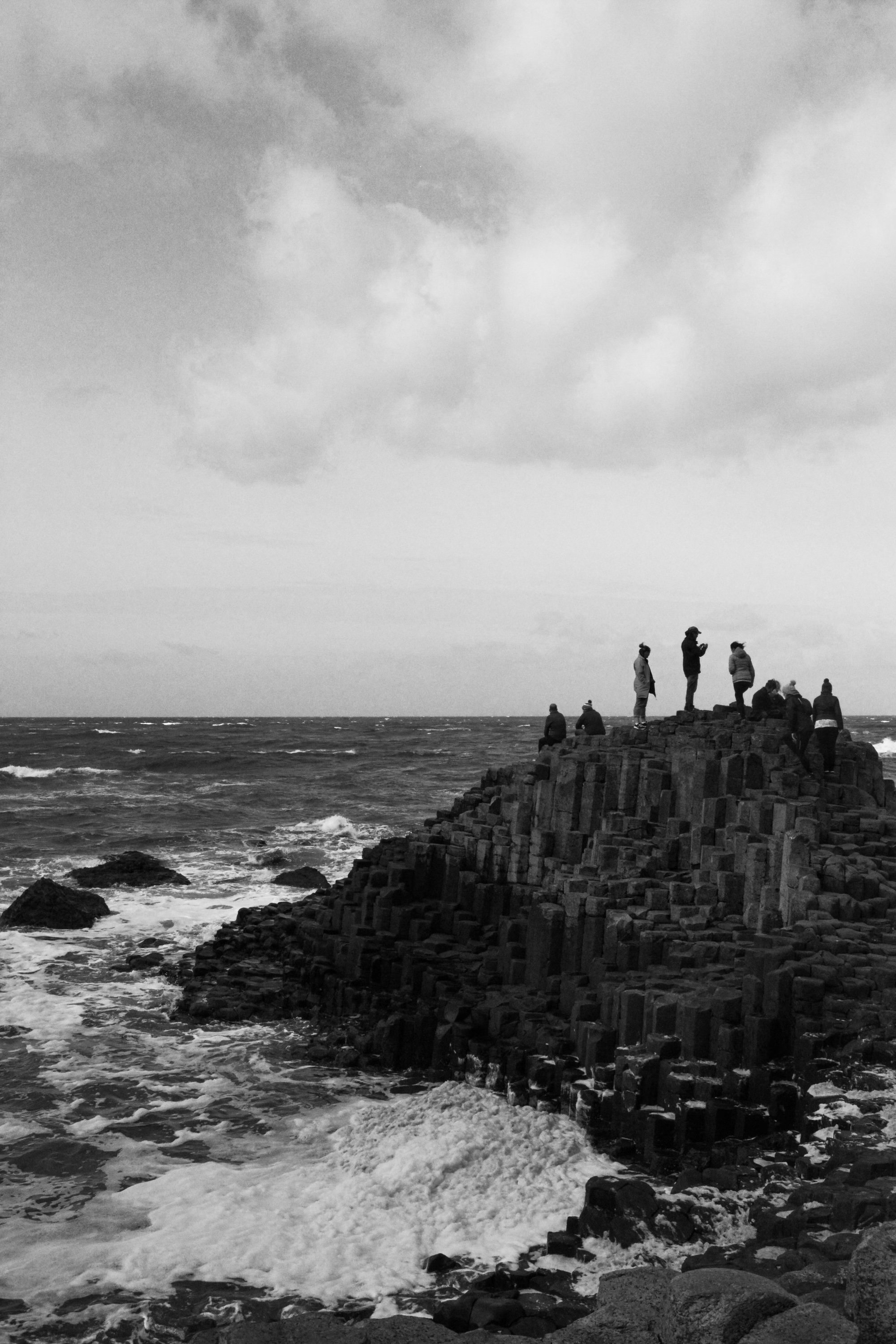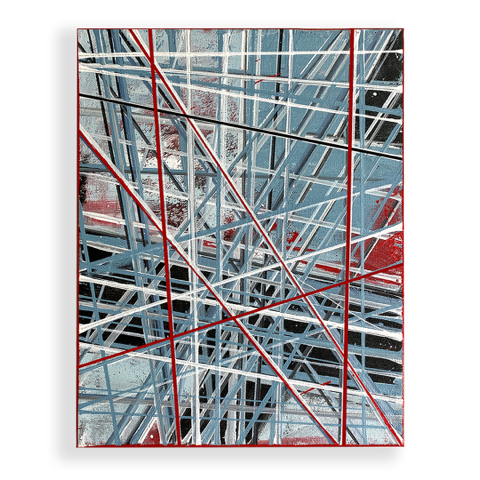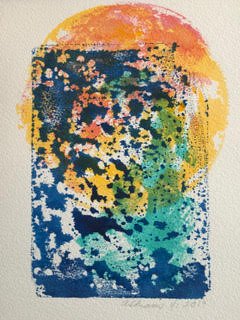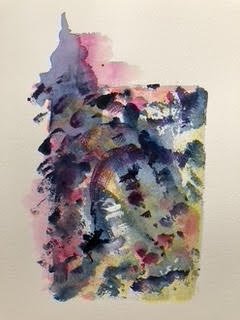LC: Scott, we're thrilled to have your work up at the shop as we have been in touch for some time now and there's a certain sense of satisfaction seeing it all come together. Please tell us about this work that you created for the shop and what you hope our community walks away with after spending some time with it.
SS: Robert, thank you immensely. It’s rare an artist gets an opportunity to create a site-specific work - where you know you have an audience. And where folks who may not usually seek out art, but love good coffee, will see it. I like to dream that they are my target audience… and yes, my painting is THE one that opens their minds to the fine tradition of painting forever!
The painting is about one who struggles with irrelevance. How one is, or, why one is, obsessed with being/becoming irrelevant or relevant for that matter. Relevant or irrelevant to what, of course, is ‘fill in the blank’. The poem is mainly about a friend of mine and i growing up artists in NY. in the eighties and nineties - it may also express his fear of irrelevance.
The painting and the poem titled the same in the throes of irrelevance, i thought to be an amusing title/image; i like the large swaying, movements that move the eye around.
These 2 ideas that we brought together at the end for the presentation at Local. The poem of the same title references lyrics from different bands that i’m currently listening to. Each line from a different song. I always love lyrics and poetry. Have you found the excerpt of the e.e. cummings poem in the piece - an excerpt from i carry your heart with me. There’s also another poem by me…called the camel. There’s a lot going on in there - I enjoyed getting into details once I had the main drawing down.
I intended to create the sense of movement. Something of a dance move is at times what is needed for effect of the mark. The mark is very important - it comes first - before design. Design emerges naturally as you feel/plan, or not plan;) your marks. The painting in the throes is mainly comprised of marks - reactions to a previous mark in the design of the entire composition. So, it’s a lot of …make a mark…step away … come back and react to the previous mark. Choosing my materials is the space between doing and not doing something on the canvas.
The Local wall is beautiful with nothing on it so i wanted to keep that integrity - scattering pictures salon style was never an option. The intention is to create a lyrical sense of movement to complement the everyday goings on at Local Coffee.
In general, I like large paintings that can fill up a room, create an atmosphere, a presence - Cy Twomblys’ Peonies/Blossom series comes to mind. Or installations by the likes of Judy Pfaff or Jonathan Borofsky - a sort of entertainment quality.
What i hope the community can take away is a tricky question. I’m not typically an idealist so there is no right answer. Perhaps I’d like the community to walk away feeling like there was something different about the experience outside of the great coffee and friendly atmosphere. Ask themselves a question about the experience, get an impression of the experience.
I wanted to give the community a small taste of an artist who has struggled with his imagery for over 40 years of painting. Forever unlearning, experimenting and painting like a kid again. It’s the activity of making art that’s most rewarding. In my case, through impulsive/reactionary marks, movements, pushing and pulling paint until stepping away. So, a painting is never really complete, never finished.
LC: You are a multimedia artist in that you are also a musician having played in the band BencH. What was it about your childhood that allowed you to pursue such rich, expressive opportunities?
SS: I believe we have innate tendencies toward things we love to do. I’m always drawn to music and art - yes, all kinds, no judgement. I owe every ounce of my childhood growth as an artist to my mom. Making art and music was always encouraged at our Brooklyn apartment. At about age 7 I’d raid her trimmings drawer (she was an apparel trimmings designer) and doodled and glued things like beads, buttons and ribbons onto looseleaf paper, eventually evolving to oaktag. By age 14 i had permission to have a 4-piece drum set in my high school bedroom on the 6th floor of a building in Brooklyn.
By age 16 i was playing Shine on you crazy Diamond with a keyboard and bass player in that same room! So, encouragement to be oneself is a good start for a kid. All i wanted to do was to get home from school and into my kid cave to make art and music. And that’s just what i did. I would take the Daily News and make collages out of the headlines and photos and stick them on the wall and scrawl away. On my high school bedroom walls hung my artwork and those huge posters of rock bands that you bought at Spencer gifts - taped up with fluorescent orange and green masking tape and black light bulbs! Irrelevant indeed.
BencH was an attempt at a street-core, industrial noise art band. 3 people grew up in a band together for 14 years so what you learn is relationship. Musically especially - we were an experimental, noise jam band - heavily influenced by Missing Foundation, Einstürzende Neubauten, Throbbing Gristle, Butthole Surfers, etc.
If you like experimental rock/jazz/industrial noise you might like to venture - find us here:
https://soundcloud.com/tom-t-hall-1
https://soundcloud.com/tom-t-hall-1/popular-tracks
https://www.youtube.com/user/benchresinvideos
LC: We talked a bit about the East Village in NYC. While I was more situated in Greenwich Village and Little Italy, the East Village always fascinated me with its 'we don't really give a fuck what you think attitude'. Some of my childhood's most memorable events happened there. Tell us what the East Village meant and means to you.
SS: The artists and musicians had to think like that - it was a self-fulfilling prophecy - failure was success… we fail over here in the east village - that’s why no one likes us and that’s ok! It was naturally transgressive. It was living art and well done at that. Remember Nick Zedd and Tommy Turner from the cinema du transgression? They were two that had that attitude you speak of but being artists they gave us what they knew how to give at the time. So it was very rock and roll.
Art and Music coincided, cohabitated - it was wonderful.
LC: You've transitioned your life to New Jersey and it's quite a swing from your childhood in Brooklyn and impressionable years in NYC. It took me a while to really accept not living in NYC anymore. (I still dont think I'm over it) How have you made the transition and maintain your core?
SS: For me, the core is maintained by knowing that it exists and most importantly, respected. That it needs food and attention just like a living being - creativity in nature.
Without art and music i am imprisoned. Honor thyself.
As far as the transition? I had built a house in upstate NY while in the band BencH - at first it was a rustic 1 room cabin with an outhouse. It soon became a house on 13 acres with an art studio and 16 track recording studio. So, I already made up my mind that the city was not where I will always be. I had all my toys in one place, it was heaven.
LC: What are you working on now and what can we expect to see from you in the near future?
SS: I’m working on a house in upstate NJ and just about completed the art studio. I have several ideas for another polyptych that is in sketch phase. It will be different than the Throes - they always are. Picture making always seem to get to where it need be.. most times without the throes of anything!
Thanks again Robert! and look forward to another go at that great, rust-colored wall @Local.
LC: What is your favorite coffee or tea beverage?
SS: Cappuccino molto caldo per favore!
Reach out directly to Scott for any inquiries @ 973.873.4258
